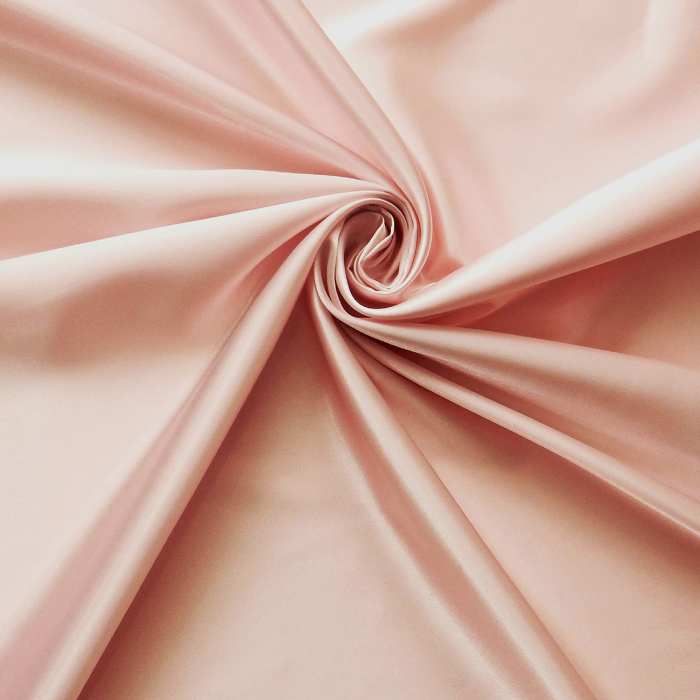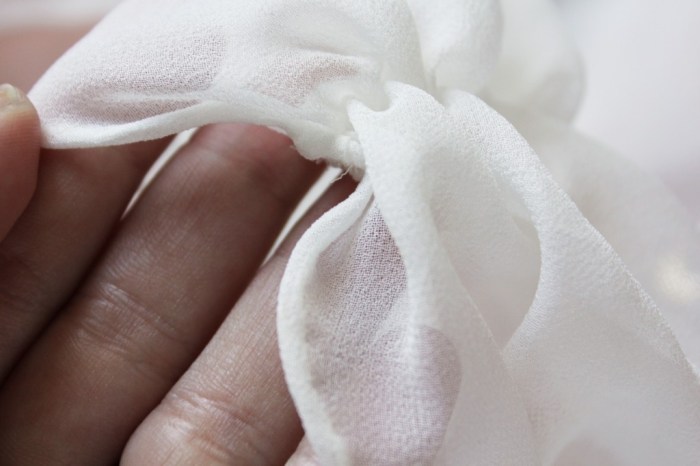Design Elements of Beaded Satin Wedding Dresses
Beaded satin wedding dresses offer a luxurious and glamorous aesthetic, achieved through a careful interplay of fabric, beading, and design elements. The choice of bead type, placement, and neckline significantly impacts the overall look and feel of the gown.
Beading Types and Placement
Several bead types contribute to the diverse textures and visual appeal of beaded satin wedding dresses. Common choices include glass beads, pearls, sequins, crystals, and even precious stones. The size, shape, and color of the beads significantly influence the dress’s overall appearance. Bead placement can range from subtle scattering to intricate patterns, creating a variety of effects.
Strategic beading can highlight specific areas of the dress, such as the bodice or skirt, while strategic sparsity can create a sense of delicate elegance.
Neckline Styles
Various neckline styles complement the elegance of beaded satin. Popular choices include sweetheart necklines, which accentuate the bust and create a romantic silhouette; V-necklines, which elongate the torso and offer a sophisticated look; and halter necklines, which are both stylish and practical. High necklines, particularly those with intricate beadwork, can provide a regal and timeless aesthetic. Off-the-shoulder necklines offer a touch of modern allure.
Sleeve Styles and Suitability
The choice of sleeves significantly influences the overall style of a beaded satin wedding dress. Different sleeve lengths and styles can be paired with beaded satin to create a range of looks.
| Sleeve Style | Description | Suitability for Beaded Satin | Overall Aesthetic |
|---|---|---|---|
| Sleeveless | No sleeves | Excellent, showcases beading on the bodice | Elegant, classic, or modern depending on the beadwork and neckline |
| Short Sleeves | Sleeves ending above the elbow | Good, balances the embellishment | Feminine, romantic, or playful |
| Long Sleeves | Sleeves extending to the wrist or beyond | Good, creates a sophisticated or dramatic look | Elegant, regal, or vintage depending on the sleeve style and beadwork |
| Cap Sleeves | Short sleeves covering the shoulders | Good, adds a touch of coverage | Classic, modest, or romantic |
Fabric and Construction
Satin’s inherent lustrous sheen and smooth drape create a luxurious backdrop for beading. The weight of the satin impacts the dress’s overall flow and feel. Heavier satin provides a more structured silhouette, while lighter satin offers a more fluid and ethereal drape. Construction techniques, including the method of bead application, are crucial in ensuring the dress’s durability and comfort.
Satin Properties and Bead Interaction

Source: fabricdirect.com
Beaded satin wedding dresses offer a luxurious and timeless elegance. The intricate beading adds a captivating shimmer, a detail often seen in high-fashion designs, such as the stunning gown worn by Salma Hayek, a Balenciaga Salma Hayek wedding dress , which showcases a similar level of sophisticated craftsmanship. Ultimately, both styles highlight the enduring appeal of exquisite detailing in bridal attire, making beaded satin a consistently popular choice.
Satin’s smooth surface allows beads to adhere securely, resulting in a flawless and elegant finish. The weight of the satin influences how the beads lie and reflect light. Lighter satin will show off the individual beads more prominently, while heavier satin will provide a more unified shimmer.
Construction Techniques

Source: thisblogisnotforyou.com
Beaded satin wedding dresses are typically constructed using meticulous hand-sewing or specialized machine techniques. Hand-sewing allows for intricate patterns and precise bead placement, resulting in a highly luxurious and bespoke finish. Machine beading can offer efficiency for simpler patterns. The lining material significantly impacts the comfort and fit of the dress.
Satin Weights and Drape
The weight of the satin significantly impacts the drape and flow of the wedding gown. Heavier satin creates a more structured silhouette, suitable for gowns with intricate beading or voluminous skirts. Lighter satin flows more easily, creating a more romantic and ethereal effect.
Lining Materials
Various lining materials enhance comfort and fit. Silk lining provides luxurious softness and breathability, while other materials such as charmeuse or satin offer similar benefits. The lining is often chosen to complement the color and texture of the outer satin.
Styling and Accessories: Beaded Satin Wedding Dress
A beaded satin wedding dress offers a versatile base for creating distinct looks with carefully selected accessories. The right accessories can elevate the dress’s elegance or create a bolder statement.
Three Distinct Looks
- Classic Elegance: A simple, elegant updo, delicate pearl earrings, and a cathedral-length veil create a timeless look.
- Modern Glamour: A sleek, low bun, statement chandelier earrings, and a short, birdcage veil add a touch of modern sophistication.
- Romantic Bohemian: Loose waves, delicate floral earrings, and a flower crown create a whimsical, romantic aesthetic.
Hairstyles
Updos, both classic and modern, complement beaded satin dresses. Loose waves or braids can also be stylish choices, depending on the overall desired aesthetic. The hairstyle should complement the neckline and beading without competing for attention.
Jewelry Choices
Jewelry should enhance the dress’s beading, not detract from it. Delicate pieces that complement the bead color and style are ideal. Avoid overly large or flashy jewelry that could overshadow the dress’s intricate details.
Veil Styles
Veil styles should complement the neckline. A cathedral-length veil works well with a classic A-line or ballgown silhouette. A birdcage veil pairs well with a shorter dress or a more modern aesthetic. A blusher veil offers a touch of romance and modesty.
Color and Trends
Current trends showcase a range of colors for beaded satin wedding dresses, from classic ivory and champagne to bolder hues like blush pink, deep blue, or emerald green. The color of the satin influences how the beading appears, with lighter colors allowing the beads to stand out more vividly.
Current Color Trends
Currently, muted jewel tones and soft pastels are popular choices for beaded satin wedding dresses. These colors create a sense of sophisticated elegance and romance. Classic ivory and champagne remain timeless options.
Color Influence on Beading
Lighter satin colors allow the beading to be more prominent, showcasing intricate details and patterns. Darker satin colors create a more dramatic effect, with the beading adding subtle highlights and texture.
Color and Wedding Mood
Color choices significantly impact the overall mood and style of the wedding. Soft pastels create a romantic and dreamy atmosphere, while bolder colors can create a more dramatic and luxurious setting.
Visual Representation of a Beaded Satin Dress
Imagine a beaded satin wedding dress in a dusty rose hue. The satin itself possesses a subtle sheen, allowing the delicately placed pearl and crystal beading to shimmer subtly under soft lighting. The beading is concentrated on the bodice, creating a shimmering cascade down the front of the dress. The skirt flows gracefully, showcasing the movement and texture of the fabric.
Price and Market Analysis
Several factors influence the cost of a beaded satin wedding dress. The type and amount of beading, the quality of the satin, the complexity of the design, and the labor involved in construction all contribute to the final price. Beaded satin dresses generally fall within a higher price range compared to dresses made from other fabrics.
Factors Influencing Cost
- Type and quantity of beading
- Quality of satin fabric
- Complexity of design and construction
- Labor costs (hand-beading vs. machine beading)
- Designer brand and reputation
Price Comparison with Other Fabrics
Beaded satin dresses typically command a higher price than dresses made from simpler fabrics like chiffon or crepe. The additional labor and materials involved in beading contribute to the increased cost.
Manufacturing Processes and Price
The intricate hand-beading process is labor-intensive and adds significantly to the cost. The sourcing of high-quality beads and satin also impacts the final price.
Care and Maintenance
Proper care and maintenance are essential to preserve the beauty and longevity of a beaded satin wedding dress. This includes careful cleaning, appropriate storage, and preventative measures to avoid damage.
Cleaning and Preservation
Professional cleaning is recommended to ensure the dress is cleaned properly without damaging the delicate beading or satin fabric. Dry cleaning is usually the safest method.
Storage Tips
Store the dress in a cool, dry place away from direct sunlight and moisture. Use an acid-free tissue paper to prevent discoloration or damage to the fabric and beading. A breathable garment bag is recommended for storage.
Preventing Damage, Beaded satin wedding dress
Avoid harsh chemicals, excessive heat, or direct sunlight, as these can damage the fabric and beading. Handle the dress gently to prevent snagging or pulling the beads.
Preserving for Future Generations
Proper care and storage will help preserve the dress for future generations. Consider storing it in a climate-controlled environment or using a professional preservation service.
Question Bank
How do I clean a beaded satin wedding dress?
Professional dry cleaning is highly recommended for beaded satin wedding dresses to prevent damage to the beads and fabric. Always use a reputable cleaner specializing in bridal gowns.
What are some budget-friendly alternatives to high-end beaded satin dresses?
Consider dresses with strategically placed beading, opting for less elaborate designs or exploring alternative fabrics like charmeuse silk with subtle embellishments to achieve a similar luxurious look at a lower price point.
Can I alter a beaded satin wedding dress?
Alterations are possible, but it’s crucial to choose an experienced seamstress familiar with working with delicate fabrics and beading. Discuss alterations carefully beforehand to avoid damage.
How long does it take to get a beaded satin wedding dress made?
Lead times vary greatly depending on the designer and the complexity of the dress. Expect a longer lead time for custom-made or heavily beaded gowns compared to ready-to-wear options. Allow ample time for alterations as well.
